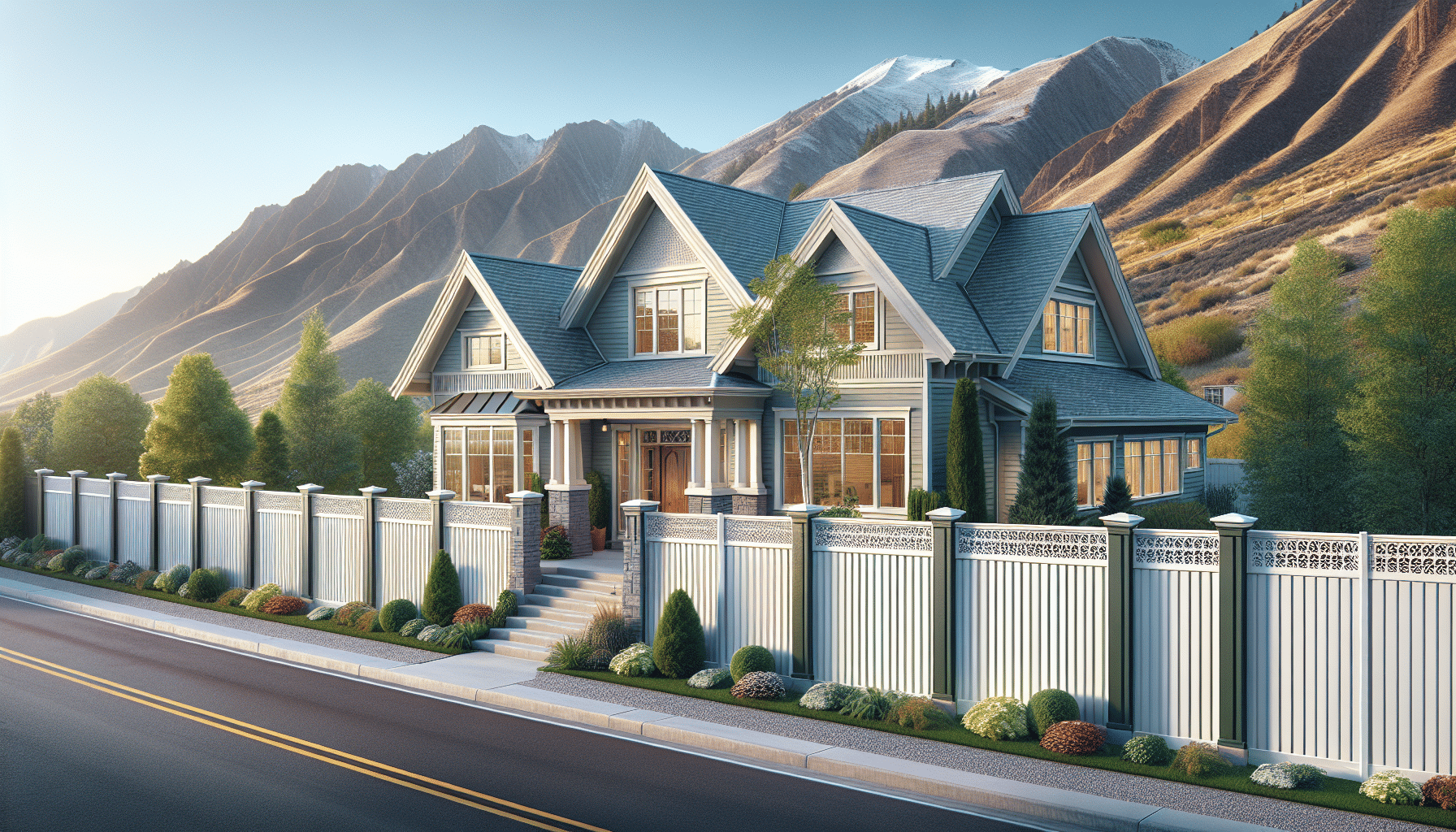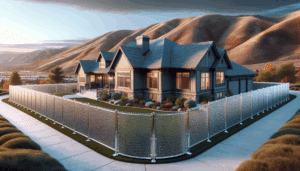Vinyl fences are gaining popularity among homeowners for their stylish appearance and long-lasting durability. However, determining the true cost can be a bit mystifying. At Logan Fence Company, our aim is to demystify all aspects of Vinyl Fence costs, from materials to installation, bringing clarity to homeowners’ minds. So, whether you’re embarking on a new fencing project or just curious, we’re here to help unravel the intricacies of vinyl fence expenses.
Contents
Understanding Vinyl Fencing
Vinyl fencing might seem straightforward at first glance, but there’s more than meets the eye. Understanding the different types of vinyl can help guide your decision-making. There are various styles, from privacy and semi-privacy to picket and decorative, each with its unique attributes. Homeowners love vinyl fencing for its resilience to weather conditions and its minimal upkeep requirements, making it ideal for diverse climate changes. Behind the secure barriers of a vinyl fence lies an investment that serves both functional and aesthetic purposes, enhancing the overall appeal of your property.
Why Choose Vinyl Fencing?
You might be asking yourself, “Why opt for vinyl over other materials?” Here’s why: Vinyl fencing is not only about immediate visual aesthetics. It promises longevity without the burden of regular maintenance. Unlike Wood that can warp or metal that can rust, vinyl maintains its sheen with just an occasional wash. Additionally, it boasts a fantastic array of design options to match any homeowner’s vision, offering both flexibility and style. With so many choices, there’s bound to be a vinyl fence that synchronizes perfectly with your home’s design ethos.
Material Costs
Now, let’s talk numbers: the materials! The cost of vinyl fencing materials can vary depending on various factors, including quality, color, and style. Typically, vinyl materials are sold in panels, and the cost can fluctuate based on the height and length of your desired fencing. Importantly, investing in higher-quality vinyl, though slightly more expensive, can save you money in the long run by reducing future repair and replacement needs. As you choose, remember that while opting for cheaper materials might appear economical initially, the future implications could be more costly.
Labor Costs
Labor costs are another crucial element in your fencing budget. The installation process requires skill and precision, and hiring professionals ensures a flawless outcome. Labor fees can vary based on the complexity and length of the fence installation. A straightforward layout on flat terrain will generally cost less compared to more challenging terrains with obstacles. It’s worth noting that while some homeowners might consider DIY installations, professional installations mitigate risks and warranty issues, often proving cost-effective in the long haul.
Factors Influencing Costs
Several elements influence the overall costs of installing a vinyl fence, so let’s dive into the main factors:
- Fence Height: Taller fences require more materials, naturally increasing the total cost.
- Fence Length: The longer your fence, the more materials and time required, impacting the overall budget.
- Terrain Challenges: Difficult terrains with slopes, obstacles, or rocky surfaces can increase labor costs due to added complexity.
- Accessory Add-ons: Features like decorative post caps or gates can enhance the fence’s function and look, but they add to the expense.
- Warranty Coverage: Opting for materials with comprehensive warranties can assure quality and save potential future costs.
Comparing Vinyl Fencing to Other Materials
How does vinyl stack up against materials like wood or metal? Financially, wood can be less expensive initially, but maintenance costs, such as staining or painting, can add up over time. Metal fences offer robust security yet can require rust treatments and regular checks. On the contrary, vinyl, despite a modestly higher initial cost, proves advantageous with its minimal upkeep and long-term resilience. This makes it a popular choice among homeowners looking for cost-effective solutions that don’t skimp on quality or aesthetics.
Maintenance Costs
One of vinyl’s key selling points is its low maintenance needs. Unlike wood that requires periodic painting or treatments, vinyl needs nothing more than basic cleaning to maintain its visual appeal. A simple wash with soap and water occasionally will keep it looking brand new. Therefore, when assessing the total cost, it becomes clear that the minimal maintenance vastly reduces expenditures, paving the way for a cost-efficient choice over time.
Environmental Impact
Vinyl is not often the first material that comes to mind regarding environment-friendly options, but let’s consider the details. Diligently produced, vinyl fencing can be both recyclable and a greener option. Manufacturing processes have made strides towards reducing harmful emissions, and many manufacturers are now incorporating recycled materials in production. Furthermore, because vinyl doesn’t need chemical treatments, it presents a more eco-conscious choice over its lifespan compared to alternatives that require regular chemical treatments.
Customizing Your Vinyl Fence
Customization is where the fun begins with vinyl fencing. From color selections and textures to decorative elements, vinyl offers an array of customization possibilities. Homeowners can tailor the height, color, and style to blend seamlessly with existing landscapes. Do you fancy a classic white picket fence or a modern privacy screen? With vinyl’s versatile nature, envisioning and creating your ideal fence becomes a delightful journey of personal expression.
Conclusion
With a clear understanding of vinyl fencing costs and factors, you’re better equipped to make an informed decision. Feel free to reach out to the friendly team at Logan Fence Company by phone at 435-383-5152 or Request a Free Quote.




